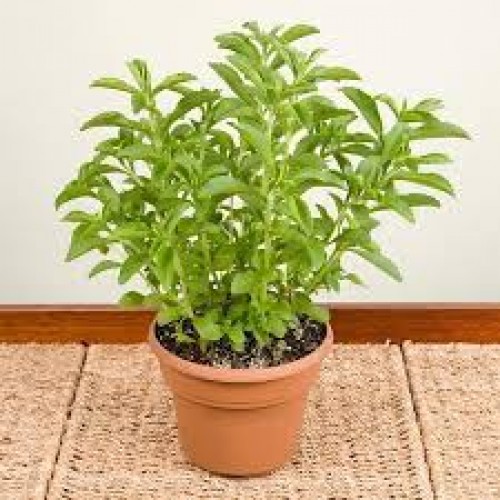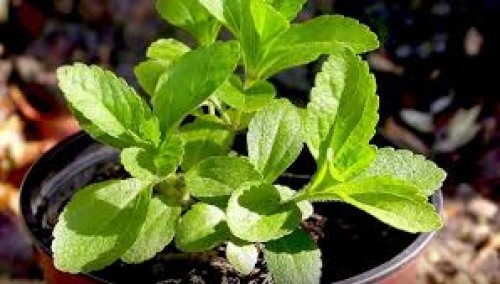off
-
Sold
-

-

out
Stevia Plant: Nature, Care & Advantages
Stevia (Botanical name: Stevia rebaudiana) is a small, herbaceous plant native to South America, renowned for its sweet leaves. The plant is often used as a natural, zero-calorie sweetener, making it a popular alternative to sugar in many dietary plans. Apart from its culinary benefits, stevia is known for its medicinal properties and is easy to grow in a variety of environments.
Nature of the Stevia Plant
Stevia is a perennial herb that grows up to 2-3 feet tall, with small, green leaves that have a naturally sweet taste. The plant produces tiny white flowers during the summer, and its leaves are the part used for sweetening. Stevia prefers warm climates, making it an ideal plant for both indoor and outdoor gardening. It has a bushy, green appearance and can be grown in pots, containers, or garden beds, depending on space availability.
Care for the Stevia Plant
- Climate: Prefers a warm, sunny environment. Ideal growing temperatures range between 18°C to 29°C (65°F to 85°F). Stevia is sensitive to frost, so it should be grown in frost-free conditions or indoors during colder months.
- Soil: Stevia thrives in well-draining, slightly acidic soil with a pH of 6.7-7.5. It can grow in a variety of soil types, but sandy or loamy soils are ideal.
- Watering: Regular watering is essential, especially in hot weather. Keep the soil consistently moist but not soggy. Avoid over-watering to prevent root rot.
- Sunlight: Requires full sunlight to thrive. Ideally, it should receive at least 6-8 hours of sunlight each day for optimal growth and sweetness of the leaves.
- Fertilization: Stevia benefits from organic compost or a balanced liquid fertilizer. It should be fed every 4-6 weeks during the growing season to encourage strong, healthy growth.
- Pruning: Regular pruning helps keep the plant compact and encourages new growth. Remove any dead or damaged stems to promote healthy branching.
- Propagation: Stevia can be propagated by stem cuttings or seeds. Cuttings should be taken from healthy, non-flowering stems and placed in moist, well-drained soil to root.
Advantages of Growing Stevia
- Natural Sweetener: Stevia is an excellent natural alternative to sugar. It is calorie-free and does not spike blood sugar levels, making it ideal for people with diabetes or those on low-calorie diets.
- Medicinal Benefits: Stevia is known for its medicinal properties, including its ability to regulate blood sugar levels, lower blood pressure, and aid in digestion.
- Low Maintenance: Stevia is relatively easy to care for, requiring moderate watering and ample sunlight. It is well-suited for gardeners with limited space, as it can be grown in pots or containers.
- Boosts Immune System: The plant contains antioxidants that help fight off free radicals in the body and may boost the immune system.
- Environmentally Friendly: Growing stevia can reduce reliance on processed sweeteners, making it a more sustainable and eco-friendly alternative.
- Versatile Use: The sweet leaves of the stevia plant can be used in teas, smoothies, baking, and cooking as a substitute for sugar or artificial sweeteners.
Conclusion
The stevia plant is a versatile and beneficial herb that offers numerous advantages, from its use as a natural sweetener to its medicinal properties. It is easy to grow, requires minimal maintenance, and can be a valuable addition to any garden. Whether you’re looking for a sugar substitute or seeking a natural remedy for various health conditions, stevia is an excellent choice for both beginners and experienced gardeners.